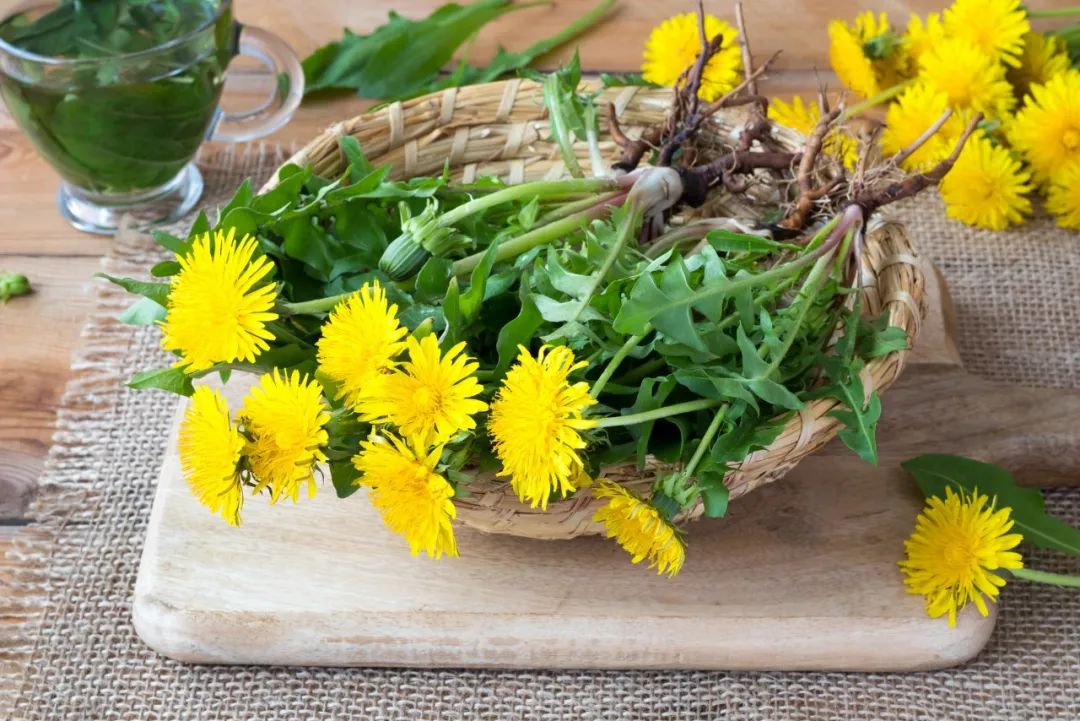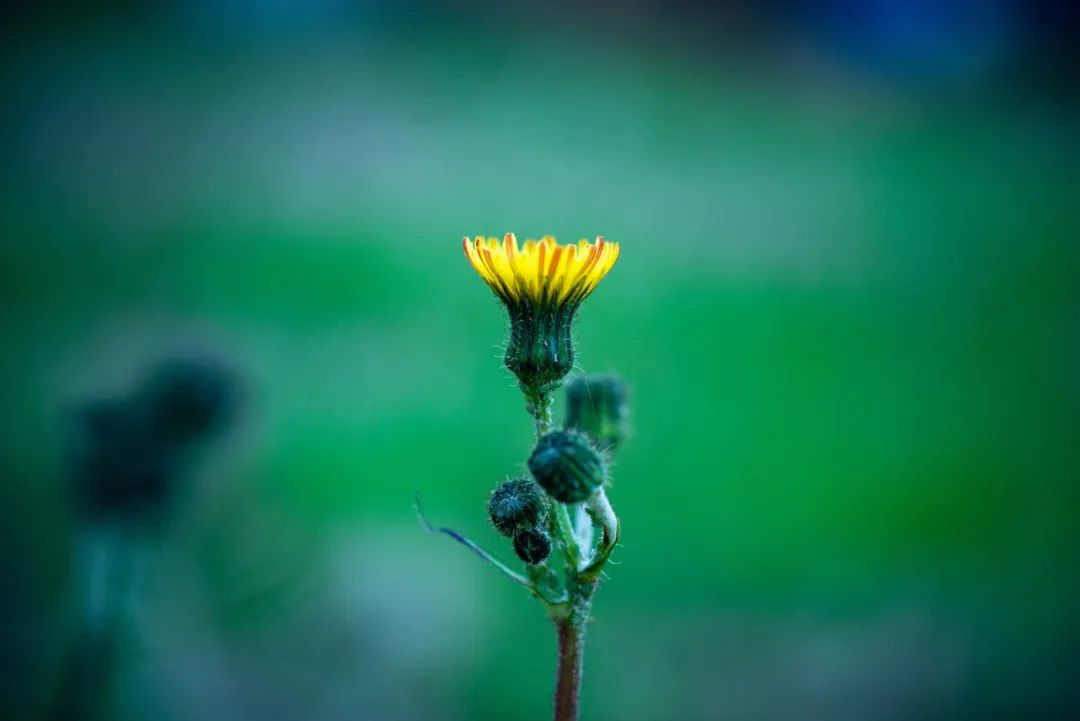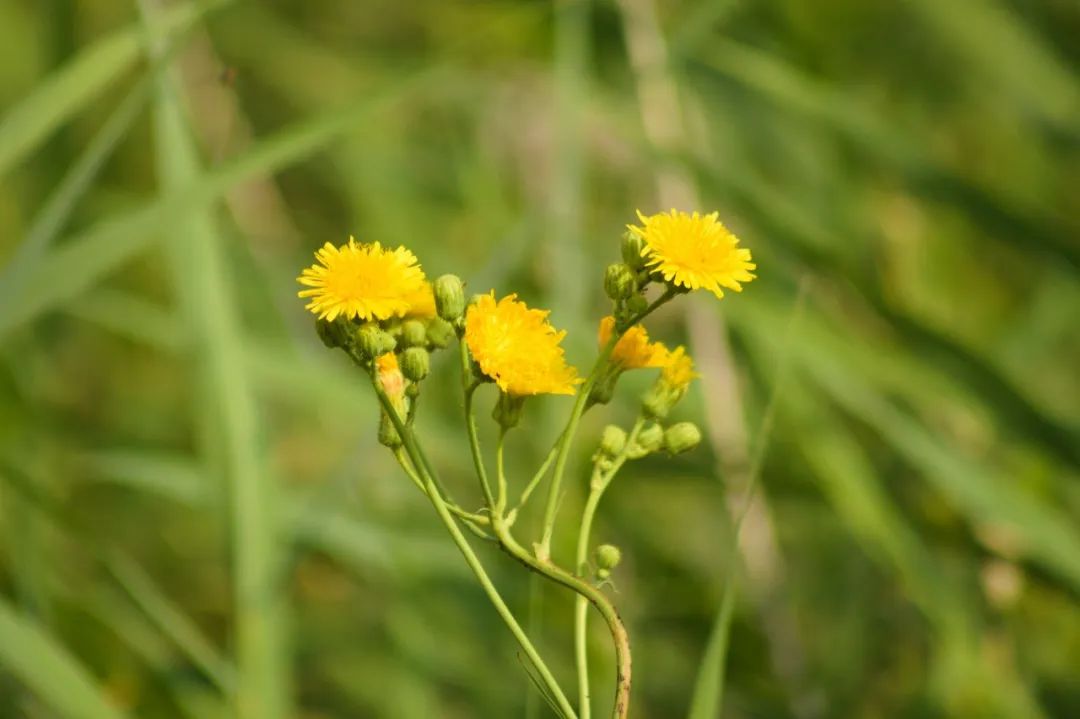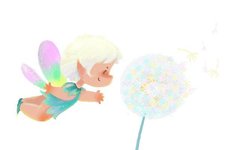 As spring warms and flowers bloom, willows sprout, and wild vegetables emerge. It is the season to enjoy fresh produce, and now is a good time to eat more wild vegetables to awaken our sluggish digestive systems. Today, I would like to recommend the dandelion, which dances in the wind.
As spring warms and flowers bloom, willows sprout, and wild vegetables emerge. It is the season to enjoy fresh produce, and now is a good time to eat more wild vegetables to awaken our sluggish digestive systems. Today, I would like to recommend the dandelion, which dances in the wind. Little yellow flowers bloom, and after they wither, they take flight.They dance in the wind, resembling both fluff and flowers.This nursery rhyme mentions the plant that looks “like fluff and flowers,” which is the dandelion. Dandelions not only have ornamental value but are also a medicinal herb listed by the National Health Commission as a food-medicine homologous material.Dandelion, commonly known as “Pópo Dīng” or “Huánghuā Dì Dīng,” is a perennial herb whose whole plant, including the roots, is used for medicinal purposes. Its medicinal value is extremely high, earning it the title of “Queen of Herbs,” recognized as the most effective detoxifying herb in the plant kingdom.There are also two other plants similar to dandelion, namely Huáng Ān Cài (Yellow Purslane) and Kǔ Jià Cài (Bitter Lettuce), which resemble dandelion and have similar effects. Let’s distinguish between these three plants together!
Little yellow flowers bloom, and after they wither, they take flight.They dance in the wind, resembling both fluff and flowers.This nursery rhyme mentions the plant that looks “like fluff and flowers,” which is the dandelion. Dandelions not only have ornamental value but are also a medicinal herb listed by the National Health Commission as a food-medicine homologous material.Dandelion, commonly known as “Pópo Dīng” or “Huánghuā Dì Dīng,” is a perennial herb whose whole plant, including the roots, is used for medicinal purposes. Its medicinal value is extremely high, earning it the title of “Queen of Herbs,” recognized as the most effective detoxifying herb in the plant kingdom.There are also two other plants similar to dandelion, namely Huáng Ān Cài (Yellow Purslane) and Kǔ Jià Cài (Bitter Lettuce), which resemble dandelion and have similar effects. Let’s distinguish between these three plants together!

Dandelion



Dandelions grow close to the ground, with leaves that are ovate-lanceolate, lanceolate, or long-ovate in shape, often with reddish-purple petioles and main veins; the flowers are yellow, with a pale green base and reddish-purple upper part.


Yellow Purslane



Yellow Purslane and dandelion look very similar, even their flowers are hard to distinguish. However, Yellow Purslane grows much taller than dandelion, reaching up to 1 meter, and has upright flower stems. The most obvious distinguishing feature is the leaves; Yellow Purslane’s leaves are smoother, while dandelion’s leaves have fine hairs.


Bitter Lettuce



Bitter Lettuce has golden yellow flowers in a head-like inflorescence, which at first glance looks very similar to dandelion. The flowers of Bitter Lettuce are usually at the top of the plant or side branches and are branched, while dandelion’s flower heads grow directly from the base of the stem, straight and unbranched; moreover, dandelion does not grow to the height of Bitter Lettuce.

The famous physician Zhu Danxi from the Jin-Yuan dynasty recorded dandelion as follows: “Dandelion flowers are yellow and belong to the earth, suitable for entering the Taiyin and Yangming meridians. There is a plant that resembles it in flower, leaf, and stem but is much larger; it is not the true one. The true dandelion is small, grows close to the ground, is very fragile, and when broken, exudes a white sap. Its flowers dry like hollow green onions. It blooms in all seasons, and after the flowers wither, the fluff carries seeds that grow where they fall, demonstrating its nature of harmonizing with heaven and earth, thus treating various toxins. It is also known as “Huanghua Diding” because it is named for treating carbuncles and toxins.” This description is very vivid.
What are the benefits of consuming dandelion?
Traditional Chinese Medicine (TCM) believes that dandelion is cold in nature, bitter and sweet in taste, and enters the liver and stomach meridians, possessing the effects of clearing heat, detoxifying, reducing swelling, and promoting urination.According to the “Compendium of Materia Medica,” “The tender shoots of dandelion can be eaten, and raw consumption is especially good for treating infectious diseases.”
Dandelion can be eaten raw, stir-fried, added to soups, or made into salads, all of which have a unique flavor. The tender leaves are delicious when stir-fried, slightly bitter yet with a lingering taste. They can also be mashed into salads or mixed into various cold dishes according to personal taste. The tender leaves can be used as filling for dumplings or buns. The flower buds can be pickled in vinegar for a unique flavor.

Reminder from the Herbalist
The herbalist reminds that dandelion is not suitable for everyone, as a very small number of people may experience allergic reactions after drinking dandelion tea. Additionally, dandelion is cold in nature, so those with kidney dysfunction, yang deficiency with external cold, or spleen and stomach weakness should avoid it.

Contributed by | Pharmacy Department Peng LiEdited by | Yang LuReviewed by | Zou ZiFinal Review | Jin Haigang



